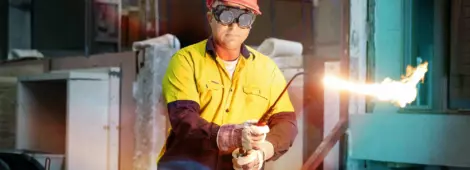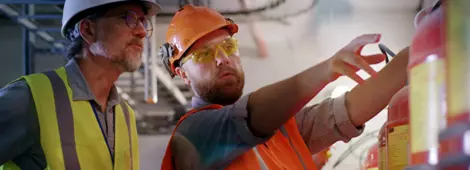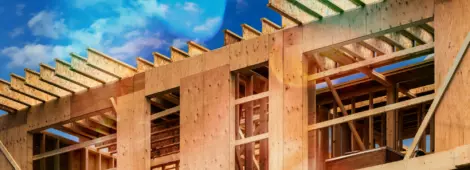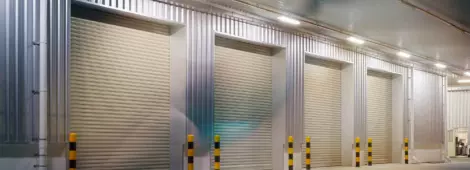
Are Your Wall and Ceiling Linings Actually Compliant? The Hidden Fire Safety Risks
by Omar Saad
When it comes to building safety, compliance with fire regulations isn’t just a box to tick. It’s a crucial factor in protecting lives and assets. The National Construction Code (NCC) 2022 sets clear requirements for internal wall and ceiling linings, ensuring materials meet strict fire performance standards. However, a concerning trend has emerged: non-compliant and unsafe materials are being installed due to misinterpretation of these regulations.
The Risks of Getting It Wrong
Wall and ceiling linings play a key role in containing fires and preventing the rapid spread of smoke. The NCC uses Group Numbers and smoke growth rate indices to classify materials and ensure they meet performance standards in critical areas such as:
- Fire escape routes
- Fire-isolated exits and stairwells
- Public corridors and open spaces
- Fire control rooms
Yet, too often, materials are being installed based on inappropriate or misleading evidence of fire performance. This can significantly compromise a building’s fire strategy, affecting everything from evacuation times to firefighter access.
How Fire Performance is Measured
Fire performance for linings is determined through rigorous testing. Materials are assigned a Group Number based on their time to flashover—the point when a fire becomes uncontrollable. The classifications, as per AS 5637.1, are:
- Group 1: No flashover
- Group 2, 3, and 4: Flashover occurs at increasing speeds
- Group 4: Extremely dangerous and not permissible in certain areas
Correct testing must be carried out under AS 5637.1, which requires physical laboratory testing using AS ISO 9705 or other predictive method as per AS/NZS 3837 or ISO 5660-1. Misuse of other testing methods can result in incorrect classifications, potentially leading to catastrophic outcomes in a fire scenario.
Common Misconceptions Leading to Non-Compliance
- “We have a compliance certificate, so it must be safe.”
Not all certificates are created equal. Some reports reference outdated or incorrect test standards, such as AS/NZS 1530.3, which is not suitable measuring fire growth. - “Our product has a Group 1 rating based on cone calorimeter testing alone.”
While cone calorimeter tests (AS/NZS 3837 or ISO 5660-1) are useful, they are not sufficient for all materials. Complex products like multilayered panels must undergo full-scale testing. - “Fire engineers can determine a Group number as part of a performance solution.”
Group numbers are part of Deemed-to-Satisfy (DtS) provisions, meaning they must be determined through prescribed testing—not assigned by a fire engineer’s judgment.
Real-World Examples of Misuse
Incorrect classification of materials has led to serious fire safety concerns. Some examples include:
- Flame-retardant treated timber and intumescent protected timber that was marketed as Group 1 but failed proper testing.
- Decorative PVC panels that appeared compliant but contributed to rapid fire spread in actual incidents.
- Multilayered acoustic panels and assemblies with individual layers tested separately rather than as an assembled system.
These misclassifications pose significant risks, including:
- Increased fire spread and smoke production which will make it very dangerous for firefighters to contain the fire
- Failure of smoke hazard management systems
- Unsafe escape routes during emergencies
- Shorter evacuation windows, endangering occupants
Understanding the NCC’s Evidence of Suitability Requirements
The NCC’s A5G6 clause specifies that fire hazard properties must be determined in accordance with AS 5637.1. This means:
- A material’s Group number must be based on AS ISO 9705 testing or an approved predictive method.
- Test reports must be issued by an Accredited Testing Laboratory (ATL).
- Generic marketing materials, CodeMark certificates, or engineering reports cannot substitute for proper fire testing.
Some manufacturers attempt to justify compliance through alternative certificates, but these often fail to meet NCC standards. For instance, AS/NZS 1530.3, which assesses ignitability, flame spread, and heat release, is not a valid substitute for AS 5637.1 when determining Group numbers.
Misinterpretation of AS 5637.1 Clause 9(n)
A common issue in test reports is the misuse of Clause 9(n) of AS 5637.1. Many reports reference it as proof that the test was valid. However, Clause 9(n) only requires the lab to provide a general statement that the test was valid—it does not confirm compliance with the core correlation with room burn testing requirements in Clauses 5.3.1, 5.3.2, or 5.3.3.
This has led to test reports being accepted without confirming whether the tested material was representative as per AS 5637.1. That undermines the credibility of the Group Number assigned and opens the door to unsafe products being installed.
Ensuring Compliance from the Start
To prevent these issues, design teams, approving authorities must:
- Verify that fire testing follows AS 5637.1
- Demand full laboratory reports—not just marketing claims
- Understand that not all evidence is valid evidence
- Consult accredited testing laboratory early to avoid costly mistakes
Failure to ensure proper compliance can have devastating consequences. In past incidents, buildings with misclassified materials have experienced faster-than-expected flashovers, leading to:
- Increased fire fatalities
- Greater property damage
- Delayed fire brigade response due to unexpected fire behaviour
What Happens If Non-Compliant Materials Are Used?
If materials are installed based on incorrect classifications, building owners, designers, and certifiers may face serious repercussions, including:
- Regulatory enforcement and fines
- Costly remediation works
- Legal liability in case of fire-related injuries or fatalities
Jensen Hughes: Your Partner in Fire Safety Compliance
At Jensen Hughes, we specialise in technical fire assessments that provide clear, accurate, and compliant fire performance data. Our expertise ensures that your project meets the strict requirements of the NCC, minimising risk and ensuring the highest level of fire safety.

Omar Saad
Omar has a comprehensive understanding of both Australian and international design, fire testing and assessment standards. He has worked in fire testing and assessment consultancy roles for a range of materials, products and elements of…











